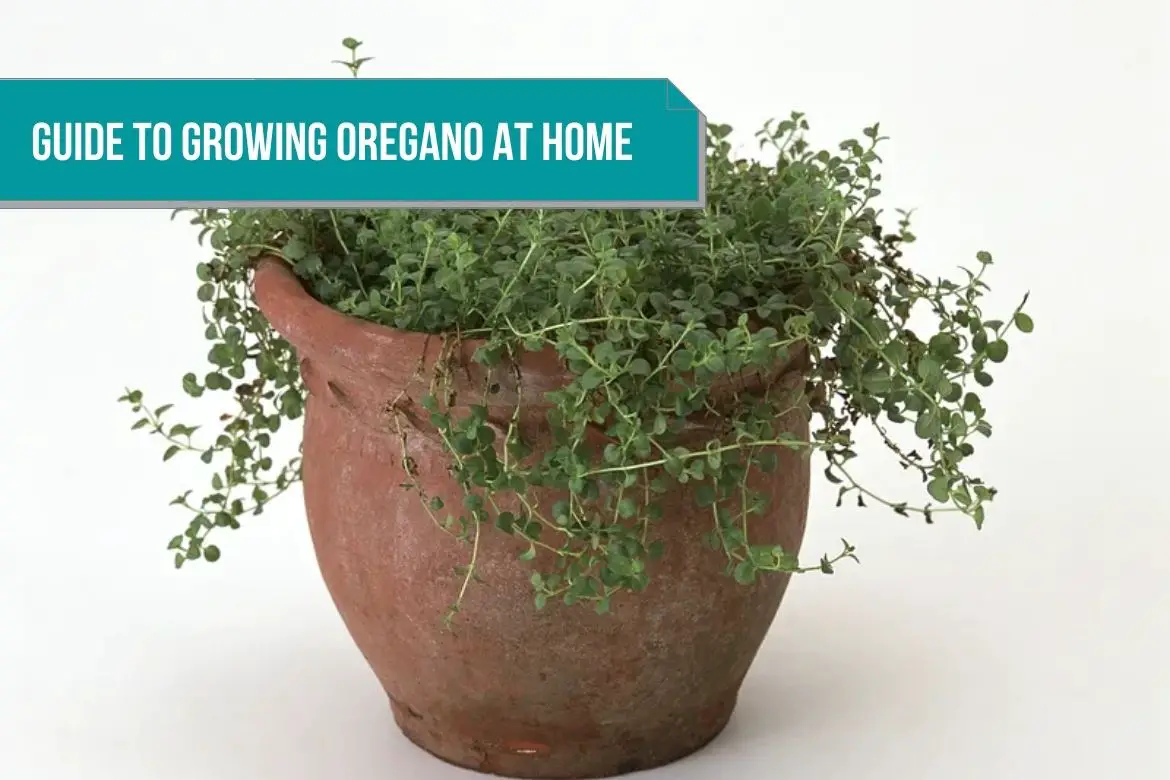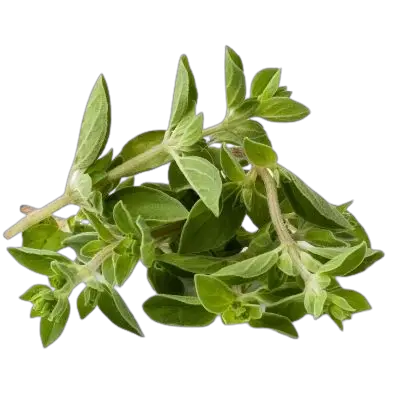
Botanical name : Origanum vulgare
Flavor Profile : Sharp, peppery, and pungent
Herb native to the Mediterranean region, oregano is known for its strong flavor and aroma. Italians, Greeks and Mexicans love this tasty dish, and it is commonly found in their cuisines. In popularity next to Oregano is Marjoram, which has a similar flavor profile.
In Europe, oregano is sometimes also called ‘wild marjoram‘. Oregano and sweet marjoram are closely related.
Ancient Greeks and Romans revered oregano as a symbol of happiness. The meaning of Oregano is “mountain joy” (Greek words: oros=Mountain, ganos=joy).
Herbs such as oregano are excellent to use both in cooking and for therapeutic purposes. Although it is bitter, it is warm and fragrant.
While oregano is popular in Mediterranean cuisine, in the United States, it is primarily known as a pizza spice or a pizza topping.
Other than in cultivation, it is often found in fields, home gardens, weedy areas, farmlands, roadsides, ditches, along riverbanks, and disturbed areas in eastern and northern Europe and cold-temperate regions of North America.
Varieties of Oregano
- Greek Oregano (Origanum vulgare var. hirtum)
- Golden Oregano
- Italian Oregano (Origanum x majoricum)
- Mexican Oregano (Lippia graveolens)
- Syrian Oregano (Origanum maru)
Note:
- Oregano and marjoram flowers attract bees, since the flowers of these herbs are very high in sugar.
- The flowers of Greek oregano are white and those of wild oregano are purple.
- Mexican Oregano is more pungent.
- Herbs of the Labiatae family may also cause side effects in people who are allergic to them. Chest pain, breathing problems, skin rashes, itching, swelling of the skin are some of the allergic reactions.
Health benefits of Oregano
The active ingredient in oregano is rosmarinic acid, which is a powerful antioxidant that may support immune system function. Oregano is one of the plants with the highest antioxidant activity rating, with 42 times the antioxidant power of apples.
As well as being beneficial for conditions such as osteoporosis and arteriosclerosis, oregano also contains beta-caryophyllin (E-BCP), a substance that inhibits inflammation.
With upper respiratory infections, oregano also has potential antiviral activity and significantly reduces symptoms immediately.
Oregano oil can also be useful if you have a cold or the flu.
As a detoxifier, oregano encourages sweat production. Additionally, You may be able to get rid of unwanted phlegm in your lungs by consuming oregano.
As well as vitamins A, C, E, and K, oregano contains fiber, folate, iron, magnesium, vitamin B6, calcium, and potassium.
How to grow Oregano indoors
Oregano is a hardy perennial herb that does well in Zone 5 – 11 and is easy to grow in container.
After winter, when the weather warms up for spring, you can plant oregano until the fall. You may, however, plant it in the fall or winter if you live in a hot, frost-free climate.
Oregano can be tricky to grow if you live in zones 4 and lower. Because it will grow as an annual (just for one year), it won’t grow the following year because cold temperatures will kill it.
You can always plant your oregano in a pot and move it indoors during the winter if you want to keep it growing.
Oregano grows as a perennial in zones 5 through 7. It goes dormant in winter and starts growing back in spring.
If you live in zone 8 or higher, you can expect your oregano to grow all year long as an evergreen. Therefore, you want to plant it in an area that gets afternoon shade so it will not burn.
Oregano can be grown by seeds, root divisions or stem cuttings. If you wish to reduce the hassle, you can get a seedling from a nursery.
Plant size

1 – 2 feet ( 12 – 24 inches OR 30 – 60 cm )
Container / pot Size

Depends on the size of the oregano shrub you wish to grow.
Choose a container which is at least 6 inches deep.
For a oregano shrub 1.5 feet wide you can choose a 12 inches container.
However, you can grow oregano in even smaller pots 4-6 inches in case you are limited in space or would like to grow oregano for ornamental purposes.
Refer how to choose the right container for your indoor plants for more details.
Sunlight
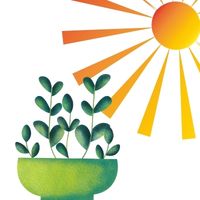
Full Sun. At least 6 hours a day.
Oregano plant grows well at 70 degrees Fahrenheit (21 degrees Celsius). However, being a hardy plant it can tolerate a temperature range of 50-80 degrees Fahrenheit (10-26 degrees Celsius).
For best results in growing oregano indoors, place the container near a large south or north facing window. You can place the container near smaller east or west facing windows as well. Placing under a skylight under direct sun is also a good option. Placing oregano on a windowsill depends on your climate. Give it some share and don’t expose it to direct sunlight in case you live in a hot climate.
Refer Best locations and Light requirements for indoor plants for more details.
Soil

Well drained, moist, and light potting mix. Oregano unlike most of the herbs is not very demanding in terms of soil.
To make the potting mix light you can add a little bit of sand or grounded granite to it.
Refer types of soils for gardening for more details.
Oregano thrive on a soil with pH range 4 to 6 (acidic soil). However, it can tolerate alkaline soil of up to 9 pH.
You can mix compost in the potting mix in the ration of 50:50.
Please refer How to get the right potting mix for your container plant for more details.
Sowing
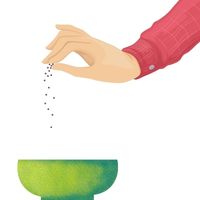
For growing oregano from seeds, sprinkle the seeds over the potting mix. The seeds are very light and small in size ( half the size of fennel seeds).
Cover the seeds with a thin layer of potting mix. You can either pat the top potting mix to set the seeds and then water or you can directly water the potting mix. Oregano plant needs sunlight to germinate from seeds.
In 7-10 days, you should see oregano seedlings germinating after sowing.
The best temperature for sowing seeds is between 60-75 F (15-24 C). Or, just make sure that the temperature is above 45 F.
For growing oregano from stem cutting, Snip a stem cutting of length 4-5 inches.
Snip the stem right at the node (the leaf joint). Remove the lower leaves along with the soft tip stem and leaf section. At the end you will have a stem which has a trimmed top (which has soft leaves), and some leaves in the middle.
You can even put the stem cutting in jar with water. Keep the jar in sunlight. In almost a week, you will have a root growing from the stem. Now you can transplant the oregano stem in a pot.
In case you are planting multiple cutting in one container, keep of spacing of 1 inches.
For, growing oregano plant using root division, divide the oregano plants in segment with roots. Plant them in the same pot or different pot depending on the size of the pot.
Watering
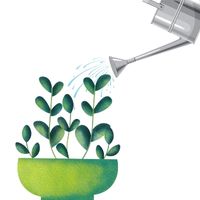
Water the oregano plant whenever the soil feels dry to the touch.
Oregano is a pretty hardy plant. However, in hot weather, watering frequency of oregano plant increases.
It is OK to water the oregano plant from overhead by wetting the leaves.
Water stressed oregano will start wilting. Water the plant when you see this.
Do not over-water oregano plant.
Similarly, wilting also happens when the oregano plant is over-watered. However, along with wilting, the leaves of oregano will start changing color to yellow, brown or black. At this time, scale back on watering. Snip the diseased leaves. In sever cases, you might have to re-pot the oregano plant.
Over watering will also reduce the flavor or oregano.
Make some drainage holes at the bottom of the container to drain the water just in case excess water is used while watering Oregano.
Refer How to make drainage holes on potting container for more details.
Harvesting

Oregano plant matures in about 45 to 50 days.
You can start harvesting the oregano springs as soon as oregano plant reaches a height of 4-5 inches.
Just snip the springs or oregano depending on your requirement.
Quick tip: For best flavor of oregano leaves, harvest them just before the flowers start opening. This is a good practice specially when you are trying to harvest oregano for drying the leaves.
Plant care
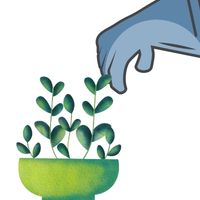
Regular pruning and regular harvesting will always help the oregano plant grow better.
In the time of winter, when the plant hardly grows, or even start changing its color to greenish brown, give the oregano plant a major cutback. Trim it down to the soil level. Now, with a sharp tool (such as a fork) uplift the soil a little. This will not only loosen the soil but also aerate the soil.
Now put a layer of potting mix on top of the soil and water it thoroughly. This practice allows the nutrients and water to penetrate the soil and improve the growing medium of oregano. Don’t worry about the oregano plant on top. It will grow back. In most cases, oregano plants will start growing from the rim towards the center.
SUBSTITUTES FOR OREGANO IN THE KITCHEN
- Mint
- Marjoram
- Rosemary
- basil
How to keep Oregano fresh
Fresh oregano leaves can be stored in refrigerator in zip lock back or air tight container for 10-14 days.
Whole or chopped Oregano leaves can be stored in in freezer in for about an year. Freeze the leaves in ice trays and then transfer he ice cubes in a freezer bag.
Dried oregano leaves can be stored for almost 6 months.
Please refer to how to store herbs and spices for more details.
How to use Oregano in the kitchen
Although the dried variety also retains its flavor, fresh oregano leaves exude the strongest flavor during the summer months.
You can use oregano to flavor butter. You can add oregano flowers to vegetable dishes, potato dishes and savory soups.
Greek oregano is without a doubt the best when it comes to flavor. Italian oregano combines marjoram and oregano in a tasty way.
It is common to combine grated or ground roots with cream, mayonnaise, mustard, oil, salt, vinegar, or yogurt.
If you need to cook the dish for a long time, make sure you use oregano rather than sweet marjoram because the latter is more robust.
Dishes that go well with Oregano : Pasta, salads, pizza, sauces, soups, marinades, stews, tomato-based dishes.
Preparation of Oregano for food : Used as a whole or chopped.
Oregano is also used in dried form.
Pairing Oregano with food
Seasonings that go well with Oregano :
Thyme, parsley, cayenne, mustard, red pepper flakes, garlic, lemon juice, paprika, bay leaf, basil, fennel, chili powder.
Fruits and Vegetables that go well with Oregano :
Potatoes ( White Potato, Red Potato, Russet Potato, Purple Potato ), tomatoes, onions, carrots, celery, Zucchini, Pepper (red pepper, yellow pepper, green pepper), mushrooms (Enoki Mushroom, Morel Mushroom, White Mushroom / Button mushroom, Cremini Mushroom, Portabella Mushroom, Shiitake Mushroom, Maitake Mushroom, Chanterelle Mushrooms, Oyster Mushroom), Olives (green olives, black olives)
Proteins that go well with Oregano :
Fish and seafood, Eggs, beef, cheeses, veal, pork, chicken, lamb, cheddar cheese, Parmesan cheese, mozzarella cheese, feta cheese, beans.

